For centuries, sailors have whispered tales of creatures lurking beneath the waves, of a sea monster with teeth as big as daggers and tentacles that could crush a ship. And while some of these tales may be exaggerated or purely mythical, there is no denying that the ocean is home to some truly bizarre and awe-inspiring creatures. Join us as we dive into the depths of the sea and uncover the myths, legends, and mysteries surrounding some of the most famous sea monsters in history. And who knows, perhaps by the end of our journey, you’ll have a newfound respect for the power and majesty of the ocean’s inhabitants. So grab a life jacket and let’s set sail on this adventure together!
Kraken
Have you heard of the fearsome Kraken, the deadliest of all sea monsters? This legendary creature has been the stuff of sailors’ nightmares for centuries, with tales of its immense size and strength striking fear into the hearts of even the bravest seafarers.
According to Nordic folklore, the Kraken is a giant squid-like creature that dwells deep beneath the ocean’s surface, waiting to drag ships and sailors down to their watery graves. It’s said to be so enormous that it can wrap its tentacles around entire vessels, crushing them with ease.
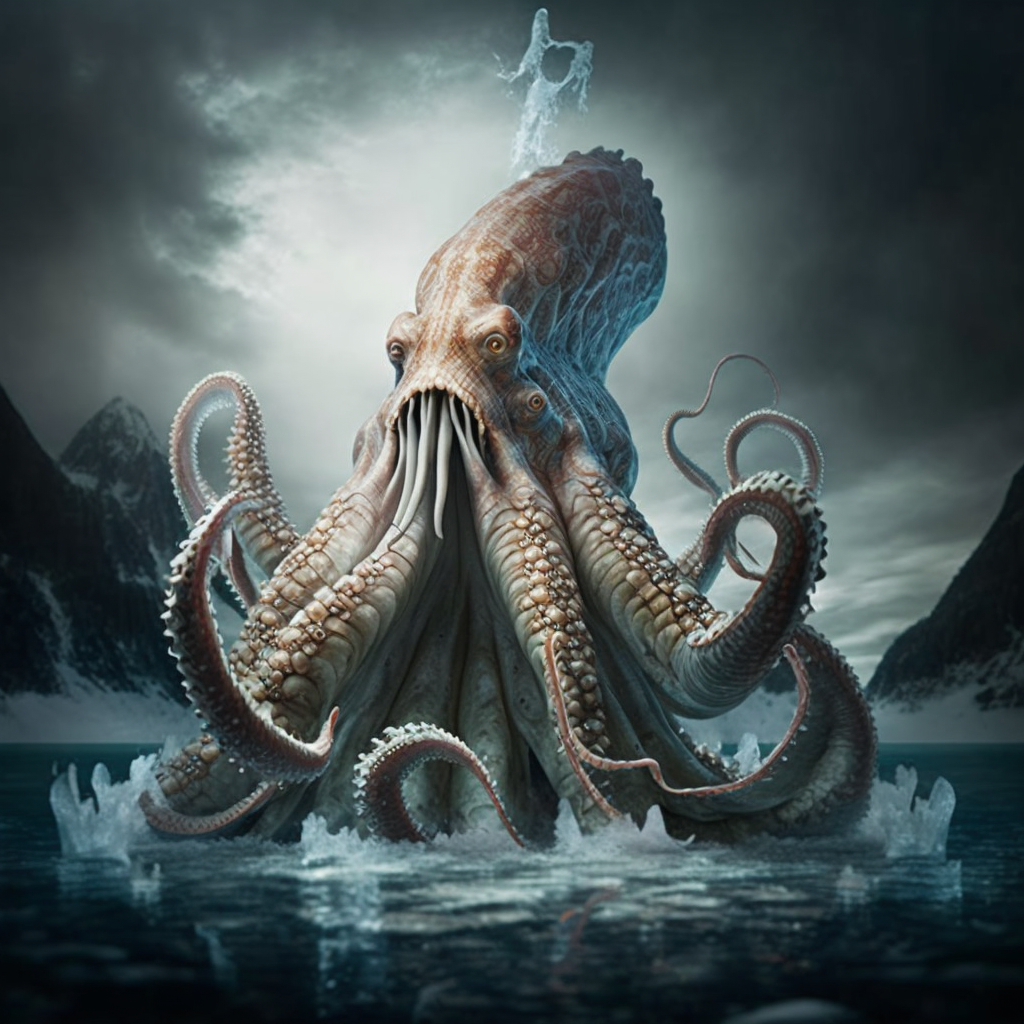
But the legend of the Kraken doesn’t end there. Many famous authors, including Jules Verne and H.P. Lovecraft, have written about this monstrous creature in great detail, adding to its mystique and allure. And even though no one has ever proven the Kraken’s existence, its legend lives on in popular culture, with countless movies and TV shows featuring the creature as the ultimate sea monster.
So the next time you set sail, keep a wary eye out for the Kraken – for if it exists, you never know when it might rise up from the depths to claim its next victim.
Leviathan
For centuries, people around the world have been fascinated by the Leviathan, a sea serpent with multiple heads and the ability to breathe fire. In Jewish folklore, the Leviathan was created on the fifth day of creation, along with all the other sea creatures. And while it is often seen as a symbol of chaos and destruction, it is also viewed as a powerful creature that represents God’s power over the sea.
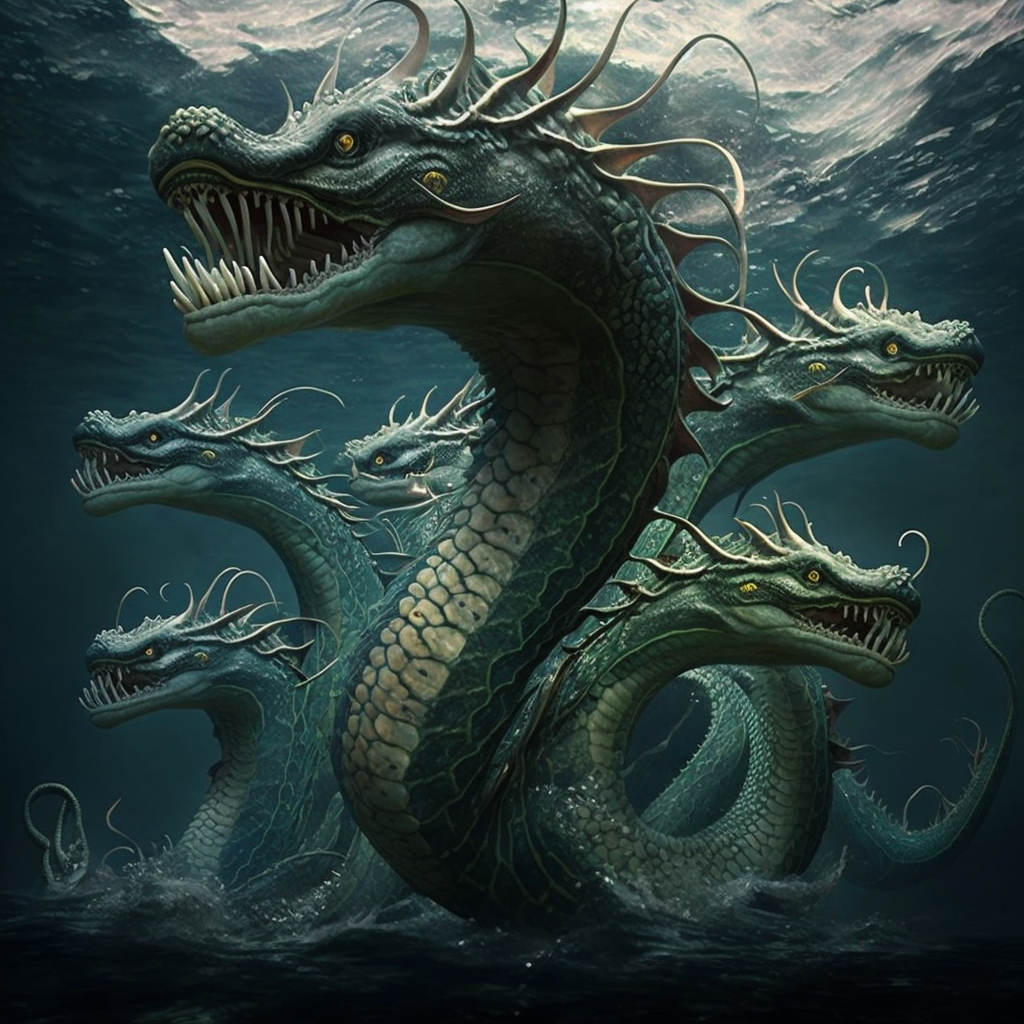
But the Leviathan is more than just a mythical monster – it is a reminder of the awesome power and mystery that surrounds us every day. When we stand on the shore and gaze out at the ocean, we are confronted with a vast and ancient force that has shaped our world for millennia. The Leviathan is a testament to the fact that, no matter how much we think we know, there will always be mysteries waiting to be uncovered.
So the next time you find yourself staring out at the ocean, remember the Leviathan.
Sirens
Let me tell you a tale that’s been passed down from generation to generation, a story of the sirens, the enchanting sea creatures that were said to lure sailors to their death with their captivating voices.
In Greek mythology, the sirens were depicted as part bird and part human, living on an island surrounded by dangerous rocks and cliffs. Sailors who heard their mesmerizing songs were unable to resist their allure, causing ships to crash on the rocks, leaving the sailors stranded and at the mercy of the sirens.
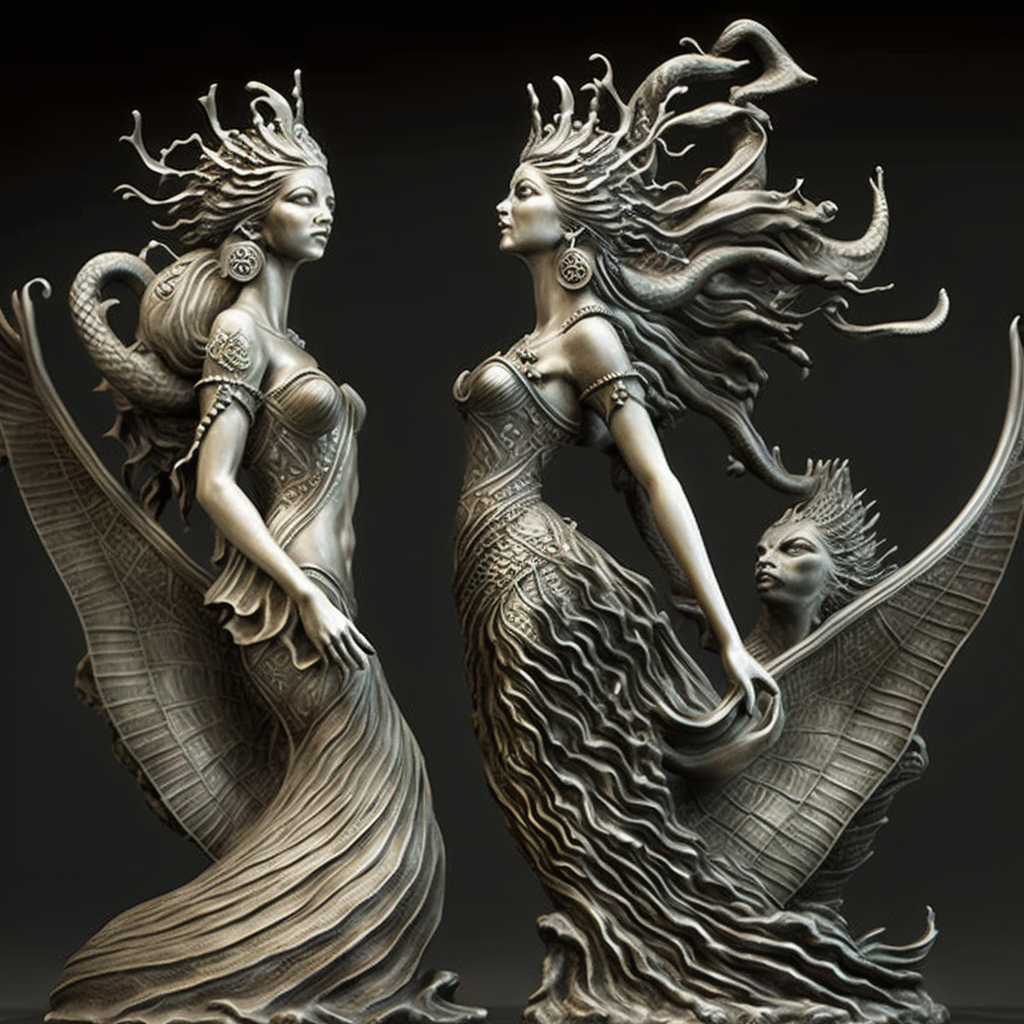
But there was a way to escape their enchanting songs. The sailors had to plug their ears with wax or tie themselves to the mast of the ship, which would allow them to resist the temptation of the sirens’ voices and safely sail past the treacherous island.
Despite their deadly reputation, the sirens have fascinated artists and writers for centuries. From Homer’s epic poem “The Odyssey” to modern-day movies and TV shows, the sirens continue to captivate audiences with their haunting beauty and irresistible voices.
Imagine the thrill and danger of sailing the high seas, knowing that the sirens could be lurking just around the corner, ready to lure you to your demise.
So next time you’re out at sea, keep your ears plugged and your eyes peeled for the mesmerizing beauty of the sirens, for they may be closer than you think.
Charybdis
Imagine being a sailor on a journey across the treacherous waters of the Mediterranean. Your vessel is small, and the waves are high. As you make your way through a narrow strait, you suddenly hear a deafening roar. The water around you begins to churn, and you feel your ship being pulled down, down, down. You are caught in the grasp of Charybdis, the infamous sea monster of Greek mythology.
Charybdis is no ordinary monster. It is a giant whirlpool that sucks ships and sailors down to the depths of the sea. Legend has it that Charybdis was once a beautiful nymph who angered the god Zeus. As punishment, Zeus transformed her into a monster and condemned her to spend eternity at the bottom of the sea, sucking in everything around her.

Navigating the waters around Charybdis was no easy feat for sailors. They had to avoid not only Charybdis, but also Scylla, another sea monster that lived on the opposite side of the strait. Scylla was said to have six heads and to snatch sailors from passing ships with her tentacles.
The story of Charybdis and Scylla has been told and retold for centuries, appearing in countless works of literature and art. It continues to be a powerful symbol of the dangers of the sea and the challenges that sailors face when navigating its unpredictable waters.
As you emerge from the grasp of Charybdis, your heart racing and your ship battered and bruised, you feel a newfound respect for the power of the sea and the creatures that inhabit it. The story of Charybdis reminds us that the ocean is a force to be reckoned with, and that we must always approach it with caution and humility.
Scylla
Have you ever heard of Scylla, the six-headed sea monster from Greek mythology? Legend has it that this terrifying creature lives off the coast of Sicily and is known for its sharp teeth and insatiable appetite for sailors.
But did you know that there are different interpretations of Scylla’s role in the sea? Some legends portray Scylla as a guardian of the waters, protecting sea creatures and sailors alike. Others paint a much darker picture, depicting Scylla as a ferocious predator who takes pleasure in devouring those who dare to cross its path.
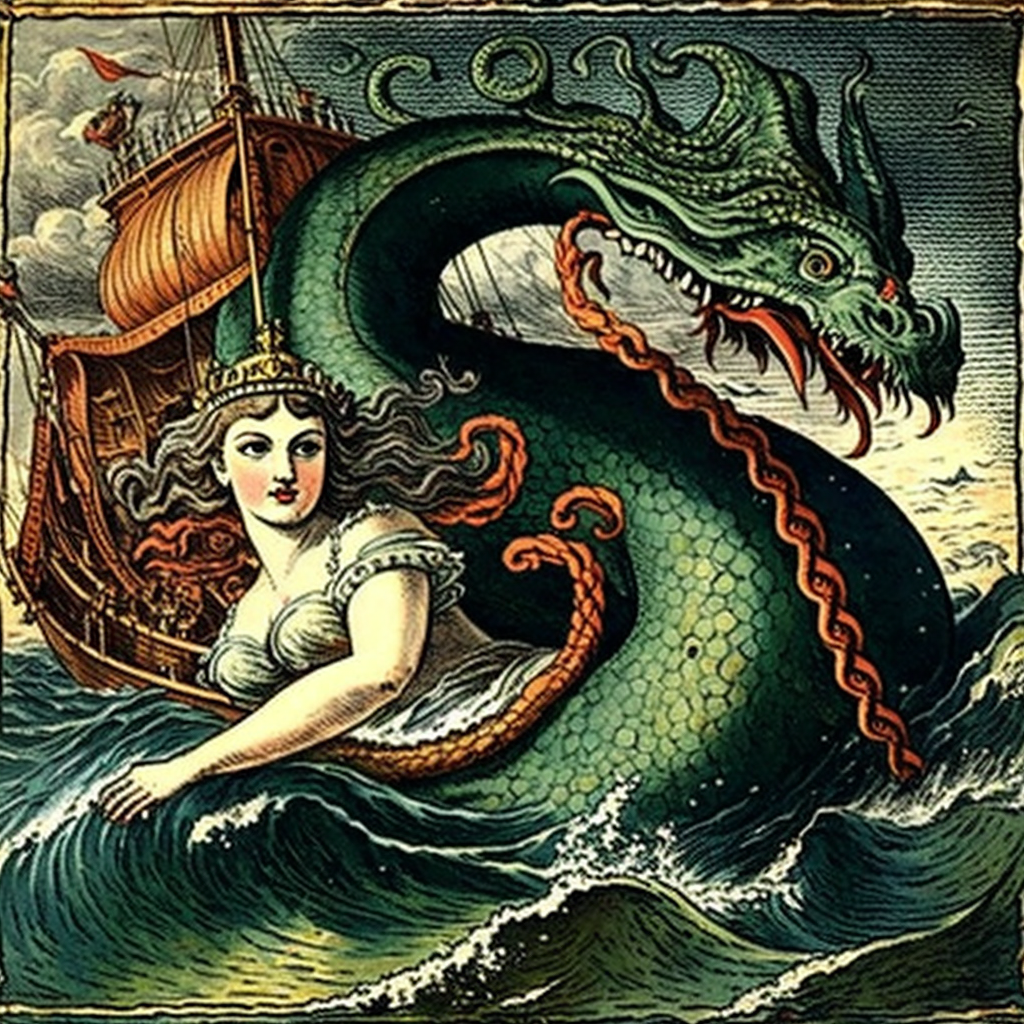
Despite the conflicting accounts of Scylla’s character, there’s no denying the awe-inspiring power and mystery of this mythical creature. Can you imagine sailing the open seas, never knowing when Scylla might rise up from the depths below? It’s enough to send shivers down your spine!
So the next time you find yourself on the shores of Sicily, keep your eyes peeled for any signs of the legendary sea monster. Who knows – you just might catch a glimpse of Scylla’s six fearsome heads rising from the waves.
Jörmungandr
Imagine standing on the shores of a vast ocean, staring out into the horizon, wondering what secrets lie beyond. Suddenly, a massive serpent emerges from the depths, its body coiling and writhing as it moves towards you. This is Jörmungandr, the sea serpent of Norse mythology, a creature so long it can encircle the entire world.
Jörmungandr’s fearsome reputation precedes it, but there is more to this creature than meets the eye. As one of the children of Loki, Jörmungandr is destined to fight against Thor during Ragnarok, the end of the world. But despite this, Jörmungandr is also seen as a symbol of balance and order in Norse mythology.
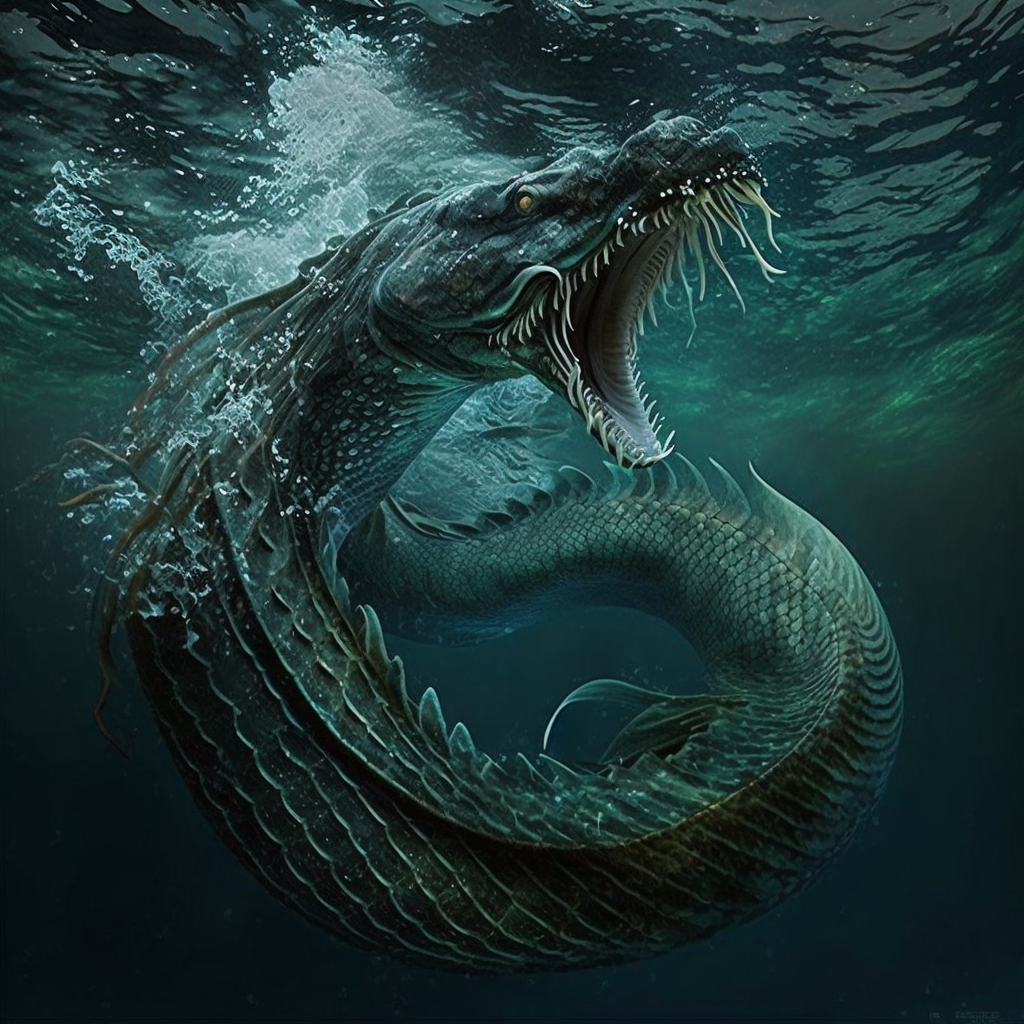
This dichotomy makes Jörmungandr a fascinating creature to learn about. It is a reminder that things are not always as they seem, and that even the most fearsome of creatures can have a deeper purpose or meaning.
Perhaps Jörmungandr’s size and power are a representation of the natural forces that shape our world, reminding us of the delicate balance that exists between chaos and order. Or maybe its role in Ragnarok is a warning of the consequences of our actions, urging us to take responsibility for our choices and their impact on the world.
Loch Ness Monster
Come closer, and let me tell you a tale of wonder and mystery. Deep in the heart of Scotland lies a body of water shrouded in legends and secrets. The Loch Ness, a serene lake nestled amongst rolling hills, has been home to the myth of the Loch Ness Monster for centuries. Nessie, as it is affectionately called, is a sea monster of unknown origin and has been the source of countless stories, sightings, and investigations.
The stories of the Loch Ness Monster have been passed down from generation to generation, captivating the hearts and minds of people around the world. According to legend, Nessie is a long-necked creature that resembles a plesiosaur, a type of prehistoric reptile that lived in the oceans millions of years ago. Could it be that Nessie is a surviving member of this ancient species? Or is it something else entirely?

Despite the lack of concrete evidence, the hunt for Nessie continues to this day. Scientists, researchers, and thrill-seekers alike flock to Loch Ness in the hopes of catching a glimpse of this elusive creature. From sonar readings to underwater cameras, a variety of technologies have been employed to solve the mystery of Nessie.
So next time you find yourself near Loch Ness, keep your eyes peeled for a glimpse of Nessie. Who knows? Maybe you’ll be the one to finally uncover the truth behind this legendary creature.
Cetus
Imagine a creature with a fish’s body, sleek and powerful, propelling it through the water with ease. But atop that body sits a dragon’s head, with fierce jaws and piercing eyes that glow in the darkness of the abyss. This is Cetus, a monster of the sea that has captured the imaginations of sailors and storytellers for centuries.
But Cetus is not simply a mindless beast. In some tales, it is said to be a guardian of the ocean, watching over the waves and protecting the creatures that dwell within them. Sailors who respect Cetus and honor its power are said to be rewarded with safe passage through its domain.

Yet in other legends, Cetus is a creature of pure terror, a monster that devours ships and their crews with ease. Its appetite is insatiable, its rage unstoppable. Sailors who encounter Cetus are doomed to a watery grave, unless they can find a way to outsmart or overpower the beast.
Despite its fearsome reputation, there is something undeniably fascinating about Cetus. Perhaps it is the mystery of the deep sea that draws us in, or the thrill of facing a creature that is both beautiful and deadly. Whatever the reason, Cetus remains a captivating figure in mythology, a reminder that even the darkest depths of the ocean hold secrets and wonders beyond our wildest imagination.
Also Read: The existence of the Mysterious Planet 9 in our Solar System
Sea Serpent
Imagine yourself on a ship, sailing through the vast expanse of the ocean, when suddenly, you spot a long, snake-like creature with fins and scales. It’s the Sea Serpent! This mythical creature has fascinated sailors and explorers for centuries, with tales of its sightings dating back to ancient times.
But what is the Sea Serpent? Is it real or just a figment of our imagination? The truth is, we may never know for sure. Some people believe that it is a real creature, while others think it’s just a myth. Regardless, the Sea Serpent continues to capture our imaginations and inspire awe and wonder.
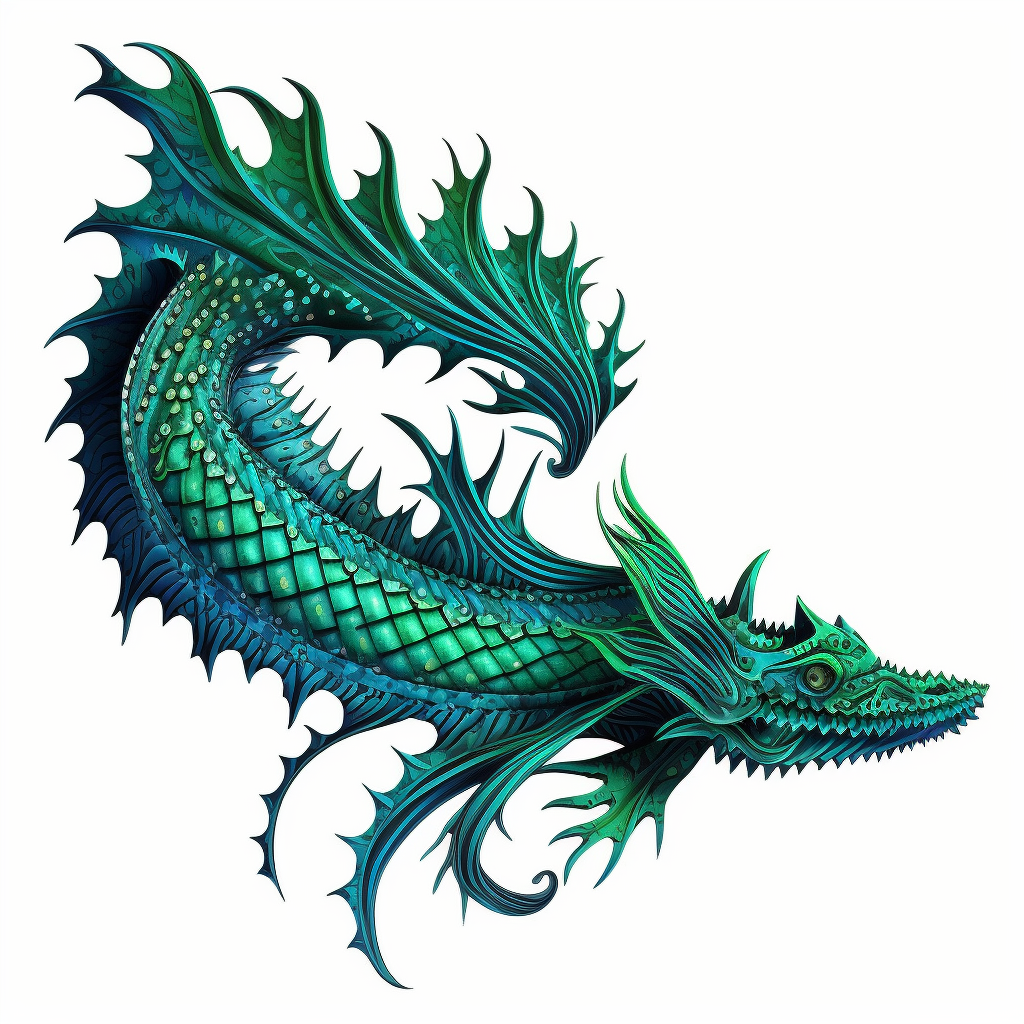
Legend has it that the Sea Serpent lives in the deepest, darkest parts of the ocean, where few have ever ventured. It is said to be a fearsome predator, with the ability to swallow entire ships whole. But there are also stories of friendly Sea Serpents, who have helped sailors in times of need.
Many cultures have their own versions of the Sea Serpent. In Norse mythology, the creature is called the Midgard Serpent and is a symbol of chaos and destruction. In Chinese mythology, the Sea Serpent is called the Liujia and is revered as a powerful and benevolent creature.
So next time you’re out at sea, keep an eye out for the Sea Serpent. And if you’re lucky enough to encounter a friendly Sea Serpent, maybe it will help guide you safely to your destination.
Hydra
Close your eyes and imagine the murky waters of a swamp. The sound of croaking frogs and chirping crickets echoes through the air. Suddenly, you hear a loud splash, followed by the rustling of leaves and twigs. You can feel your heart beating faster as you realize that you’re not alone. You look to your left and see the terrifying sight of the Hydra.
In Greek mythology, the Hydra is a sea monster with multiple heads that can regenerate if one is cut off. The sight of this creature alone is enough to send shivers down anyone’s spine. But what makes the Hydra even more frightening is the fact that it’s said to be immortal. That means that it can’t be killed by conventional means.
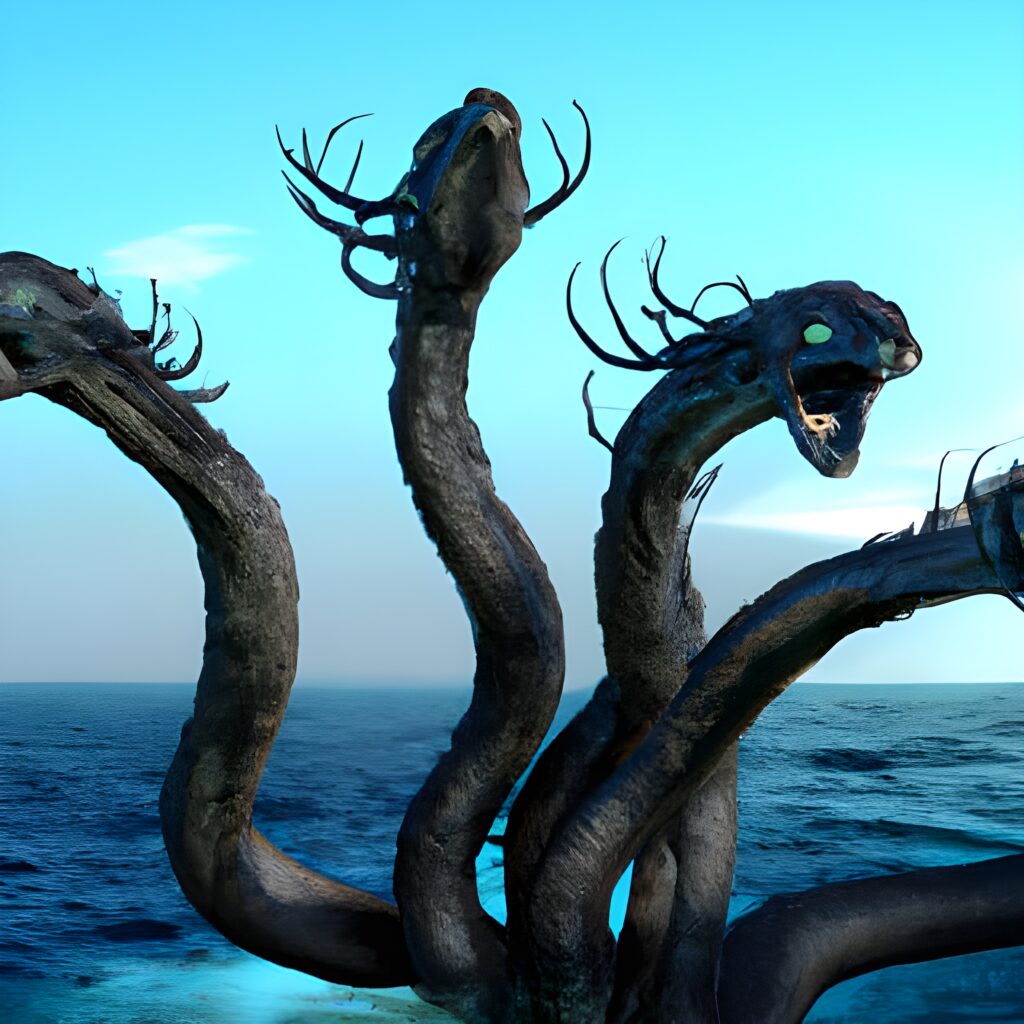
The Hydra is not just any ordinary monster; it’s a symbol of something much deeper. In our lives, we all have our own personal “Hydras” – things that seem impossible to defeat, whether it’s a personal demon or an obstacle that seems insurmountable. But just like in the myth, there is a way to conquer these Hydras.
The only way to defeat the Hydra is to cut off all of its heads. But as soon as one is cut off, two more grow in its place. It’s a never-ending battle, but it’s one that we all must face at some point in our lives. Just like Hercules, who defeated the Hydra with the help of his friend, Iolaus, we too can conquer our personal Hydras with the help of our loved ones.
For centuries, sea monsters have been the stuff of legends and myths, embodying the unknown and perilous aspects of the ocean, as well as its stunning magnificence. While some of these beasts may have never actually existed, their tales still intrigue and enchant people worldwide. Whether they are seen as agents of havoc and devastation or as mighty protectors of the sea, sea monsters remain an important part of our cultural heritage.
If you want to gain further knowledge about it, you can purchase the recommended book
